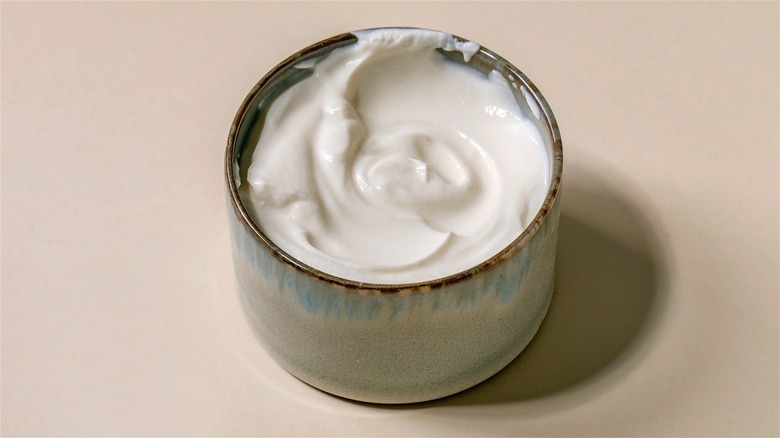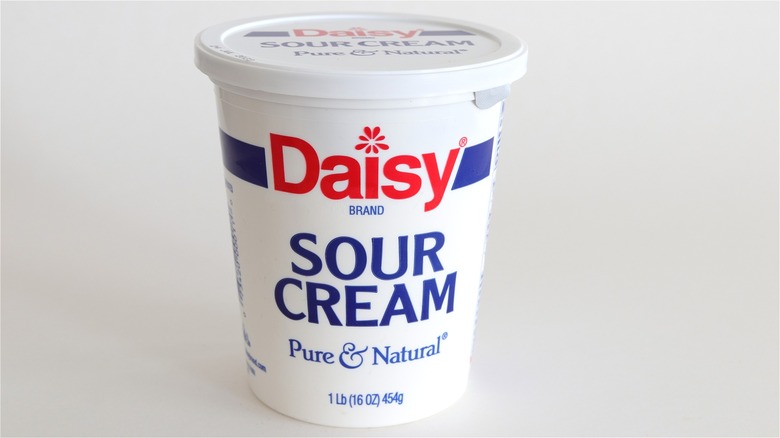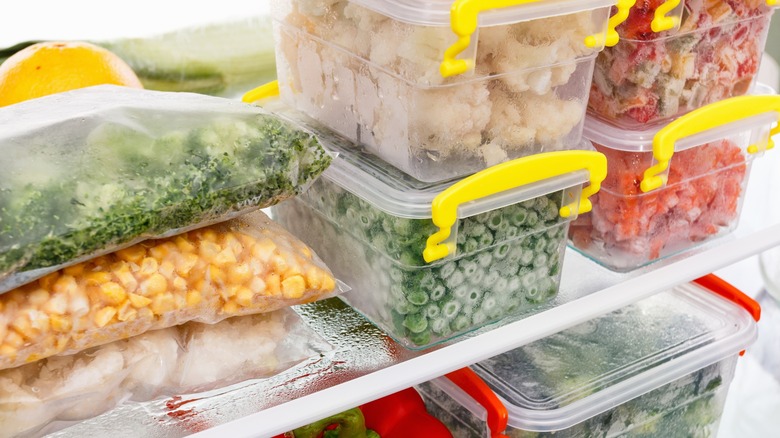Here's How Long Sour Cream Will Be Good After It's Been Opened
It's taco night in your household, and you head over to the fridge to get out the cheese, lettuce, and (most importantly) sour cream. You especially love this last creamy addition, and have even considered making your own sour cream, but it only costs $2 at the grocery store. As you're assembling your ingredients, you realize that you can't quite remember what day you opened that creamy white condiment. If it was last week, is it still good?
It likely is. According to the United States Department of Agriculture, sour cream will stay edible and safe for one to three weeks, as long as it stays at or below 40 degrees Fahrenheit in your fridge. It's totally fine to leave it in the container in which it came. You'll also want to keep the lid on it, to prevent your sour cream from being exposed to any outside bacteria in your fridge. As soon as you bring it home from the store, the sour cream should go straight into the fridge. And, if you have it on the counter for your taco night, it should sit out no more than two hours, per the USDA's recommendation for avoiding bacterial growth.
How to tell if your sour cream has gone bad
What you definitely don't want to do is eat spoiled sour cream. But luckily, there are some markers that will indicate whether or not your condiment has gone bad. Pull it out of the fridge and let your nose be the judge first. How does it smell? Although sour cream may taste a little tart, the fresh stuff doesn't have much of an odor. If it's gone bad, the stuff will have an easily perceptible, rotten stink.
If there isn't a scent, you can also use your eyes. Any sour cream that has mold on it should be immediately thrown away. This is because, while you could just scrape the actual mold off the top, it could have spread throughout the container, making it potentially dangerous to consume. We'll gladly assume that it's not safe to eat.
Sour cream that is discolored should certainly hit the trash, as well. If it has turned yellow, brown, or green, it's not a good sign. There is also the texture to look for. While some separation is normal, if your sour cream starts to resemble cottage cheese — more than the creamy condiment you're used to — it should definitely be tossed.
Making your opened sour cream last longer
If you know you won't be using your sour cream for a few months, but you're loath to throw out a just-opened container with a lot still left in it, let your freezer do what it does best: preserve foods by stopping the growth of bacteria. You can even freeze your sour cream right in the container in which you bought it. Just make sure to write the date on the outside, so you know when it's time is up. Speaking of, your sour cream should stay good for up to three months when frozen. It should be used immediately upon thawing (which you should do in your fridge).
However, there is one caveat to saving your sour cream in this way: the texture will thin out once it's thawed. While you can take a whisk or beaters to it to help fluff it out again, it won't be like new. For this reason, thawed sour cream should be used as one ingredient among many, such as part of a pasta salad dressing or in a cheesecake.


